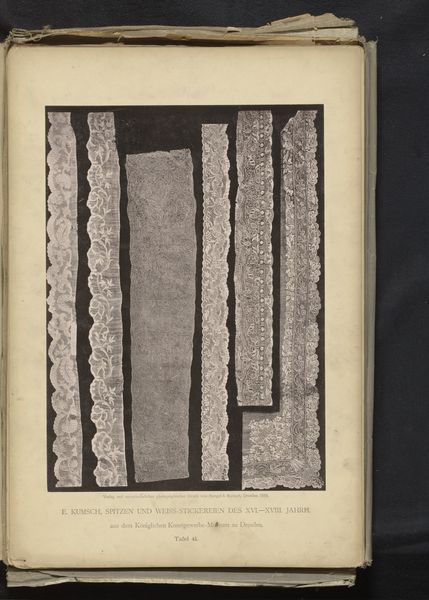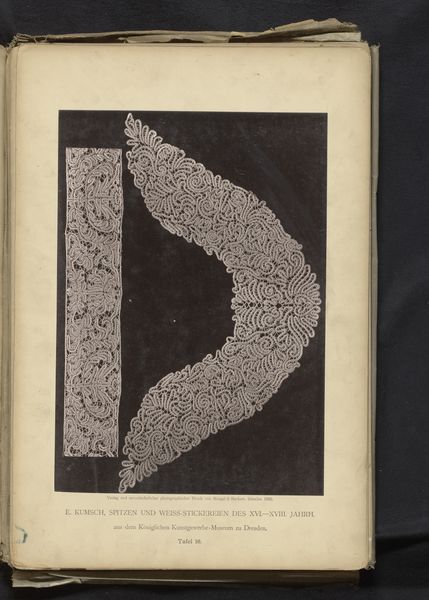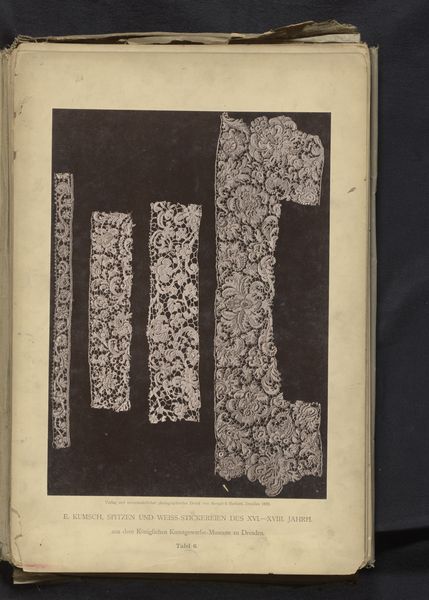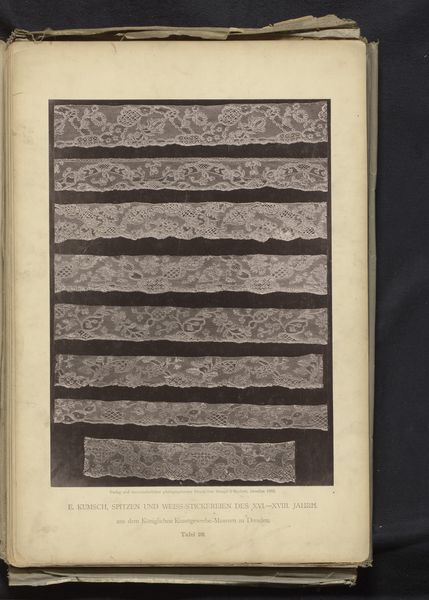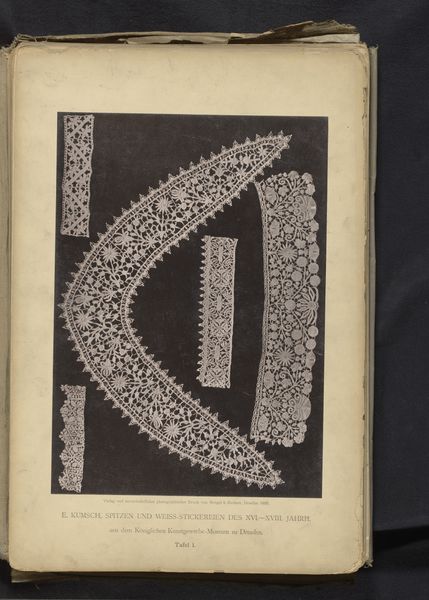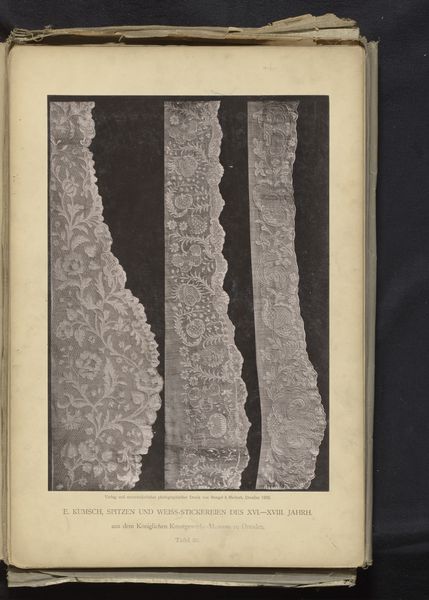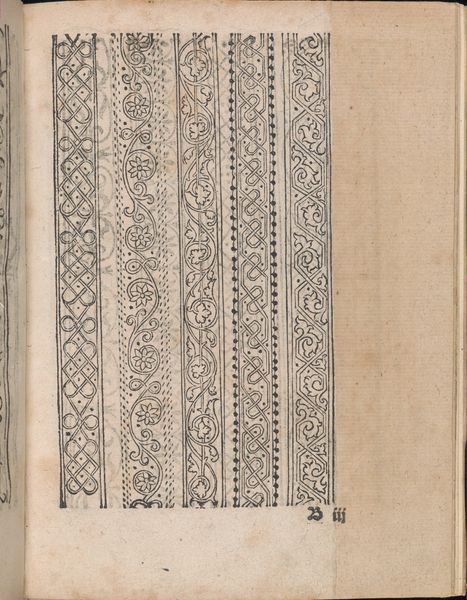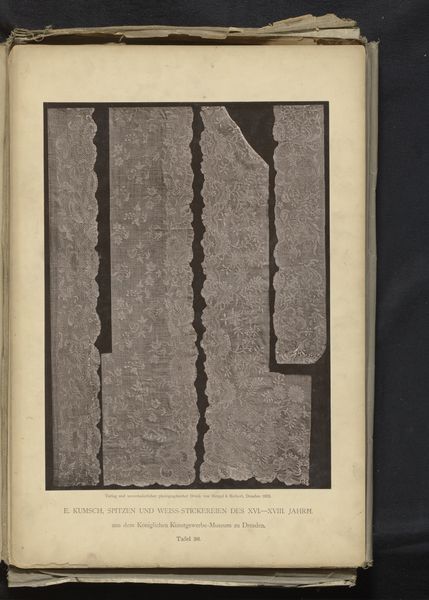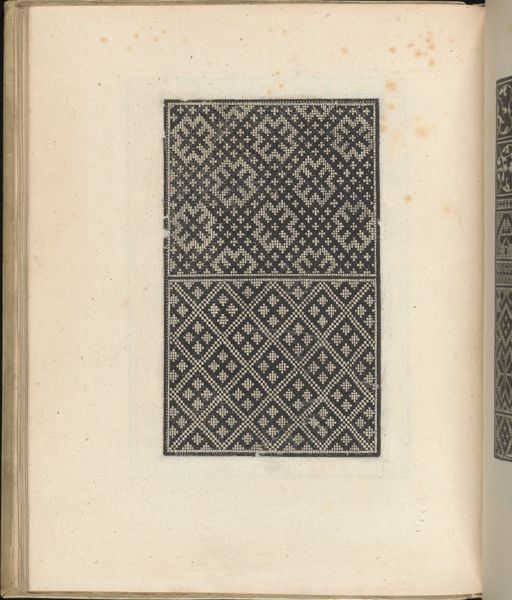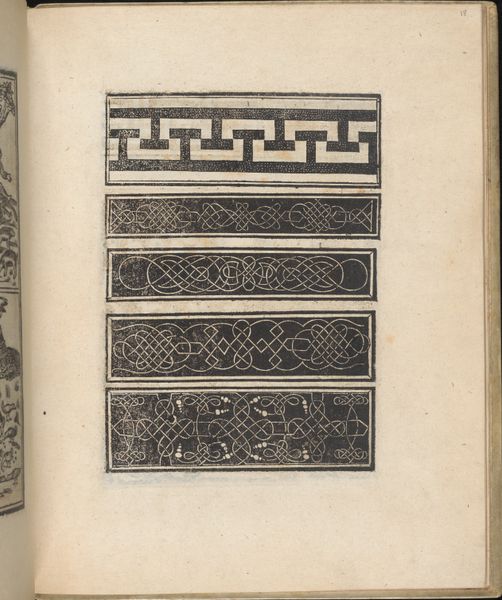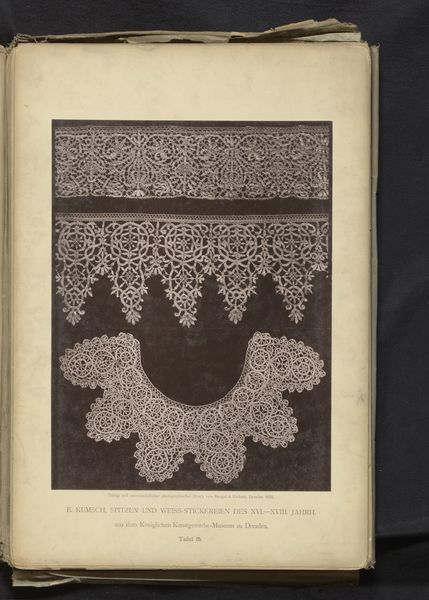
Vier stroken Frans kant uit circa 1720 en twee stroken 17de-eeuws Frans kant, uit de collectie van het Kunstgewerbemuseum in Dresden 1888
0:00
0:00
graphic-art, print, textile
#
graphic-art
#
type repetition
#
aged paper
#
toned paper
#
reduced colour palette
# print
#
old engraving style
#
sketch book
#
textile
#
personal sketchbook
#
sketchbook drawing
#
decorative-art
#
sketchbook art
#
columned text
Dimensions: height 354 mm, width 251 mm
Copyright: Rijks Museum: Open Domain
Curator: At the Rijksmuseum today, we’re looking at a print from 1888. It is titled "Vier stroken Frans kant uit circa 1720 en twee stroken 17de-eeuws Frans kant, uit de collectie van het Kunstgewerbemuseum in Dresden". It depicts several strips of lace mounted in what seems to be a book. Editor: My immediate thought is, this has a rather haunting quality, wouldn’t you agree? The delicate lace against the dark backdrop feels like preserved relics, specimens even. The muted colors add to the sense of time passing. Curator: It absolutely conveys a sense of preservation. Lace itself is so connected to memory, isn't it? Passed down through generations, imbued with stories of the hands that made it. Notice how the composition directs your eye to the center, where we see the patterns expand from what appears to be botanical forms. Editor: I'm interested in what this says about labor. I imagine the creation of these original laces was painstaking, time-intensive work. Replicated as a print, it brings up ideas around craft versus industrial production, and the accessibility of designs to a wider audience. Who made the original laces, and who created this print? The shift in materiality really changes the power dynamics. Curator: Precisely! The print translates the textural intricacies of lace into a flattened, reproducible image. There’s also an interesting contrast between the ephemerality of fashion and the enduring nature of the printed image here, especially considering the care taken to collect and document these textiles within the Kunstgewerbemuseum. These delicate fabrics were obviously very valued. They were considered signifiers of beauty, of taste, and of a particular social standing. Editor: And considering that lace was historically associated with wealth and status, turning it into a reproducible image democratizes it somewhat. It's fascinating how the print, a product of industrialization, captures something so intricate and handmade. I am intrigued by this act of archiving craft in this particular way. Curator: It speaks to our enduring need to connect with the past and understand how objects shape our identity and experience. What began as adornment evolves into a study of artistry. Editor: Agreed, the transformations in materiality, along with who gets to access that transformation, tells a broader story about social and economic change.
Comments
No comments
Be the first to comment and join the conversation on the ultimate creative platform.

